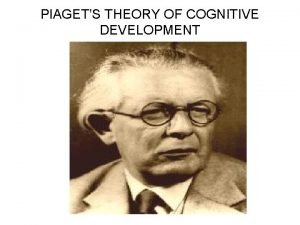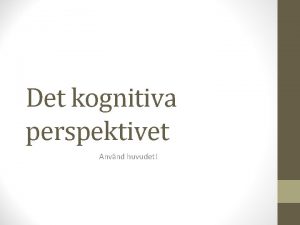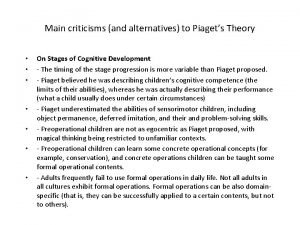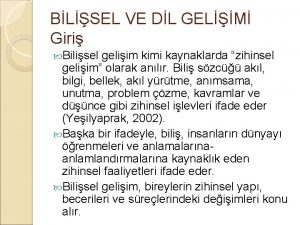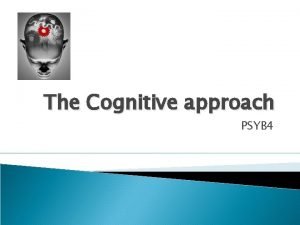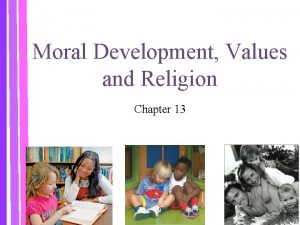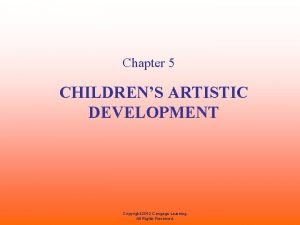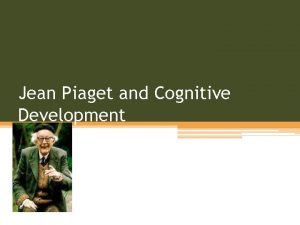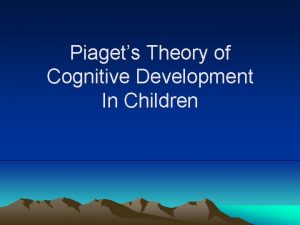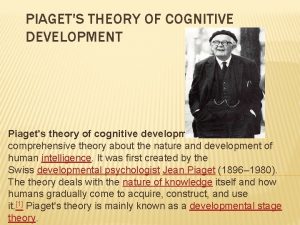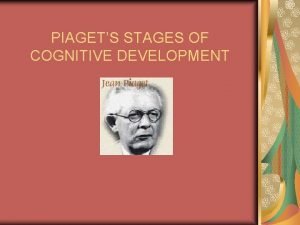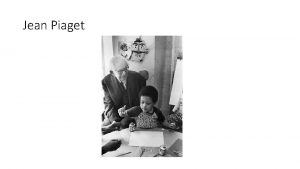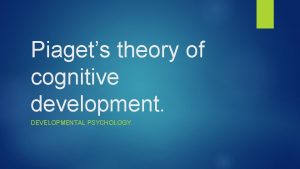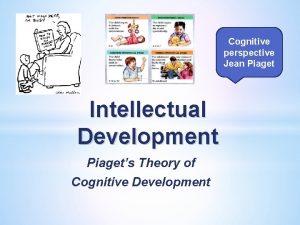Cognitive Development Piaget Outline What is cognition Piagets










- Slides: 10

Cognitive Development - Piaget Outline What is cognition? Piaget’s Theory Features of theory Sensorimotor stage Preoperational stage Concrete operations stage Formal operations stage Problems with theory Learning Outcomes 1

What is cognition? Virtually everything we do involves thinking or cognitive functioning Recalling a phone number Remembering a list Following directions Reading your watch (how much time until…? ) How do children become able to do all these things? Why are some better at some tasks? Why are some quicker to develop? 2

A Constructivist Approach Jean Piaget’s theory remains the standard against which all other theories are judged Often labeled constructivist because it depicts children as constructing knowledge for themselves Children are seen as Active Learning many important lessons on their own Intrinsically motivated to learn 3

Nature and Nurture Piaget believed that nature and nurture interact to yield cognitive development Adaptation: The tendency to respond to the demands of the environment to meet one’s goals Organization: The tendency to integrate particular observations into coherent knowledge 4

Sources of Continuity Three processes work together from birth to propel development forward Assimilation: The process by which people translate incoming information into a form they can understand Accommodation: The process by which people adapt current knowledge structures in response to new experiences Equilibration: The process by which people balance assimilation and accommodation to create stable understanding 5

Discontinuities The discontinuous aspects of Piaget’s theory are distinct, hierarchical stages Central properties of Piaget’s stage theory: Qualitative change Broad applicability across topics and contexts Brief transitions Invariant sequence Hypothesized that children progress through four stages of cognitive development, each building on the previous one 6

Piaget’s Stages of Cognitive Development 7 Sensorimotor Birth to 2 years Infants know the world through their senses and through their actions. For example, they learn what dogs look like and what petting them feels like. Preoperational 2 -7 years Toddlers and young children acquire the ability to internally represent the world through language and mental imagery. They also begin to be able to see the world from other people’s perspectives, not just from their own.

Piaget’s Stages of Cognitive Development 8 Concrete Operational 7 - 12 years Children become able to think logically, not just intuitively. They now can classify objects into coherent categories and understand that events are often influenced by multiple factors, not just one. Formal Operational 12+ years Adolescents can think systematically and reason about what might be as well as what is. This allows them to understand politics, ethics, and science fiction, as well as to engage in scientific reasoning.

Implications for Education Piaget’s view of children’s cognitive development 9 suggests that children’s distinctive ways of thinking at different ages need to be considered in deciding how best to teach them In addition, because children learn by mentally and physically interacting with the environment, relevant physical activities, accompanied by questions that call attention to the lessons of the activities, are important in educational practice

Learning outcomes Demonstrate an understanding of Piaget’s theory. Be familiar with the experiments carried out by Piaget Show an awareness of the strengths and weaknesses of theory. Reading ● Siegler, Deloache & Eisenberg, Chapter 4 ● See. pdf handout for further reading 10
 Outline piaget's theory of cognitive development
Outline piaget's theory of cognitive development Ge exempel på hur vi använder kognitiva scheman
Ge exempel på hur vi använder kognitiva scheman Criticisms of piagets theory
Criticisms of piagets theory Piaget theory of cognitive development
Piaget theory of cognitive development Piaget ve vygotsky dil gelişim karşılaştırılması
Piaget ve vygotsky dil gelişim karşılaştırılması Jean piaget theory
Jean piaget theory Cognitive and non cognitive religious language
Cognitive and non cognitive religious language Cognitive psychology essay
Cognitive psychology essay Piaget's theory of moral development
Piaget's theory of moral development Piaget moral
Piaget moral Theories of child art development
Theories of child art development
